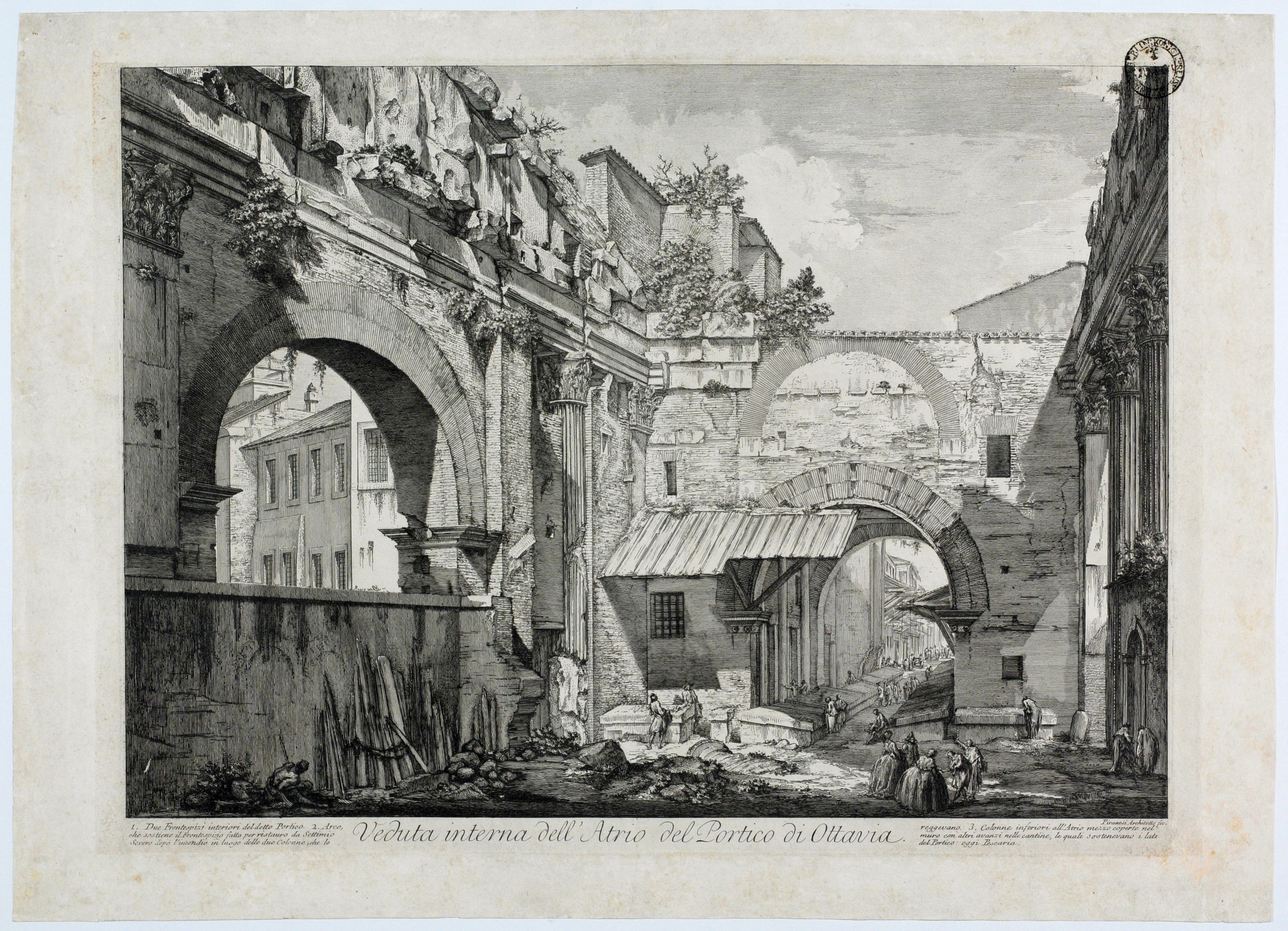Innenansicht des Portikus der Octavia nach Westen

Ist der Betrachter in den Portikus der Octavia eingetreten, schaut er nach Westen in eine schmale Straße hinein, die zu Piranesis Zeiten zum jüdischen Ghetto gehörte. Im Vordergrund erhebt sich der Portikus der Octavia. Piranesi gestaltete die Oberfläche dieses antiken Bauwerkes höchst lebendig: Säulen, Ziegelmauerwerk, Putzreste, überwuchernde Pflanzen, Holzanbauten, Quadersteine und skulpturierte Steine bieten ein pittoreskes Bild. Die Verschattungen im Vordergrund reichen fast bis zum dunkelsten Schwarzton.
Imke Ritzmann
Imke Ritzmann
(Object from: Stiftung Preußische Schlösser und Gärten Berlin-Brandenburg Original entry)
Material /Technique ...
Papier, Radierung
Measurements ...
Blatt: Höhe: 47.30 cm Breite: 65.40 cm – Platte: Höhe: 41.30 cm Breite: 54.70 cm – Darstellung: Höhe: 39.20 cm Breite: 54.00 cm
[Relationship to location] ...
Sant'Angelo in Pescheria
[Relationship to location] ...
Porticus Octaviae
[Relationship to location] ...
Rome
[Relationship to location] ...
Italy
[Relation to person or institution] ...
Intellectual creation ...
... Who:Giovanni Battista Piranesi (1720-1778)
... When:1748-1766
... Where:Rome
Literature ...
- Hind, Arthur Mayger: Giovanni Battista Piranesi. a critical study with a list of his published works and detailed catalogues of the prisons and the views of Rome, London 1922, Nr. 59.
- Petrucci, Carlo Alberto: Catalogo generale delle stampe tratte dai rami incisi posseduti dalla Calcografia nazionale, Rom 1953, Nr. 752.
- Robison, Andrew: Piranesi - early architectural fantasies. a catalogue raisonné of the etchings, Washington, Chicago 1986.
- Wilton-Ely, John: Giovanni Battista Piranesi. the complete etchings, Bd. 1, San Francisco 1994, Nr. 167.
- Wilton-Ely, John: Giovanni Battista Piranesi. the complete etchings, Bd. 2, San Francisco 1994.
- Focillon, Henri: Giovanni-Battista Piranesi. Essai de catalogue raisonné de son oeuvre, Paris 1918, Nr. 816.